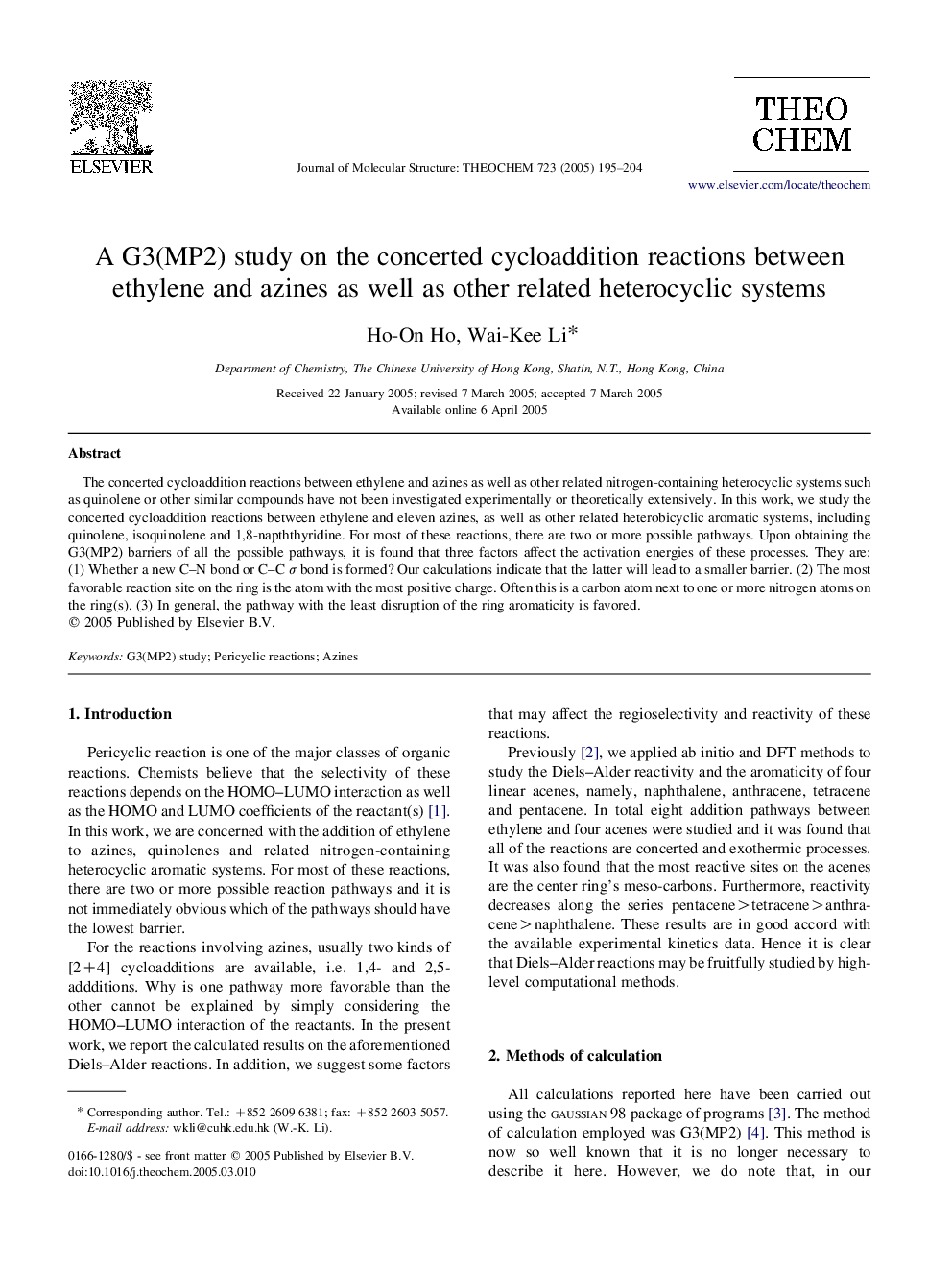| Article ID | Journal | Published Year | Pages | File Type |
|---|---|---|---|---|
| 9591717 | Journal of Molecular Structure: THEOCHEM | 2005 | 10 Pages |
Abstract
The concerted cycloaddition reactions between ethylene and azines as well as other related nitrogen-containing heterocyclic systems such as quinolene or other similar compounds have not been investigated experimentally or theoretically extensively. In this work, we study the concerted cycloaddition reactions between ethylene and eleven azines, as well as other related heterobicyclic aromatic systems, including quinolene, isoquinolene and 1,8-napththyridine. For most of these reactions, there are two or more possible pathways. Upon obtaining the G3(MP2) barriers of all the possible pathways, it is found that three factors affect the activation energies of these processes. They are: (1) Whether a new C-N bond or C-C Ï bond is formed? Our calculations indicate that the latter will lead to a smaller barrier. (2) The most favorable reaction site on the ring is the atom with the most positive charge. Often this is a carbon atom next to one or more nitrogen atoms on the ring(s). (3) In general, the pathway with the least disruption of the ring aromaticity is favored.
Keywords
Related Topics
Physical Sciences and Engineering
Chemistry
Physical and Theoretical Chemistry
Authors
Ho-On Ho, Wai-Kee Li,
